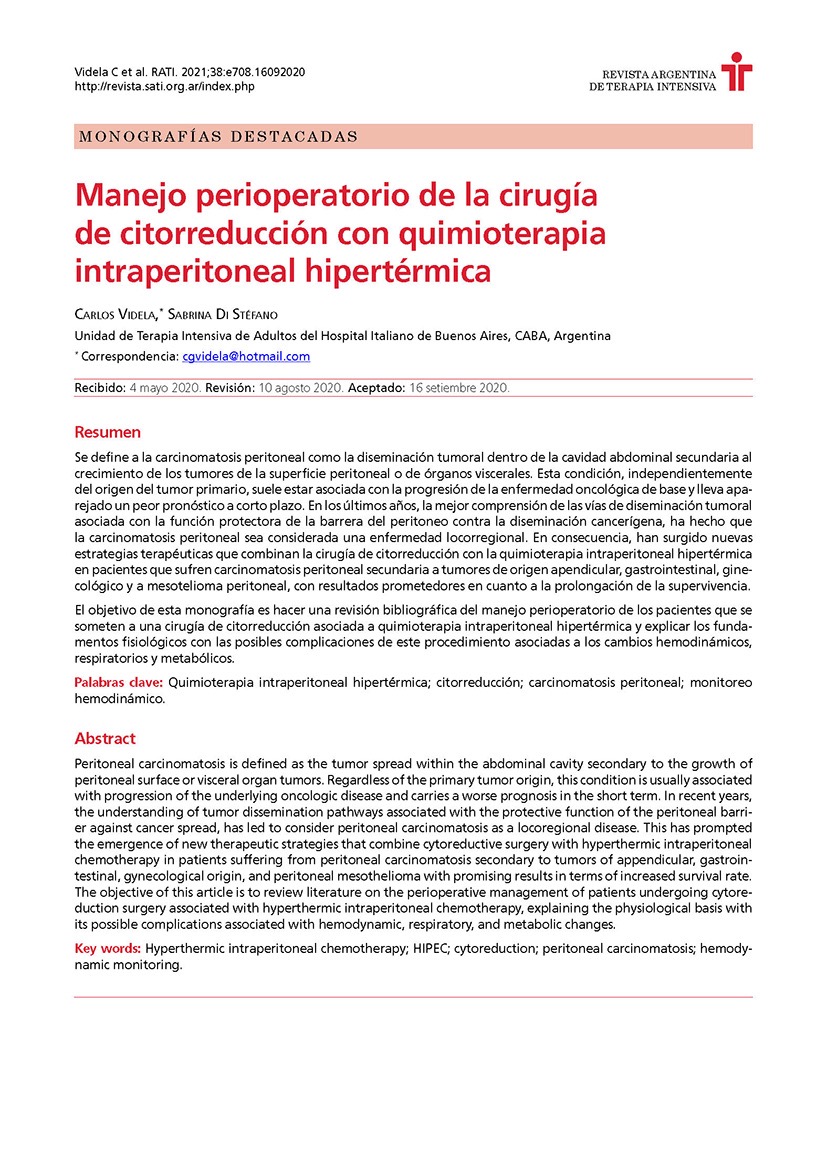Resumen
Se define a la carcinomatosis peritoneal como la diseminación tumoral dentro de la cavidad abdominal secundaria al crecimiento de los tumores de la superficie peritoneal o de órganos viscerales. Esta condición, independientemente del origen del tumor primario, suele estar asociada con la progresión de la enfermedad oncológica de base y lleva aparejado un peor pronóstico a corto plazo. En los últimos años, la mejor comprensión de las vías de diseminación tumoral asociada con la función protectora de la barrera del peritoneo contra la diseminación cancerígena, ha hecho que la carcinomatosis peritoneal sea considerada una enfermedad locorregional. En consecuencia, han surgido nuevas estrategias terapéuticas que combinan la cirugía de citorreducción con la quimioterapia intraperitoneal hipertérmica en pacientes que sufren carcinomatosis peritoneal secundaria a tumores de origen apendicular, gastrointestinal, ginecológico y a mesotelioma peritoneal, con resultados prometedores en cuanto a la prolongación de la supervivencia.
El objetivo de esta monografía es hacer una revisión bibliográfica del manejo perioperatorio de los pacientes que se someten a una cirugía de citorreducción asociada a quimioterapia intraperitoneal hipertérmica y explicar los fundamentos fisiológicos con las posibles complicaciones de este procedimiento asociadas a los cambios hemodinámicos, respiratorios y metabólicos.
La revista no retiene los derechos de reproducción (copyright) por lo que los autores pueden volver a publicar sus trabajos con la sola mención a la fuente original de publicación.

